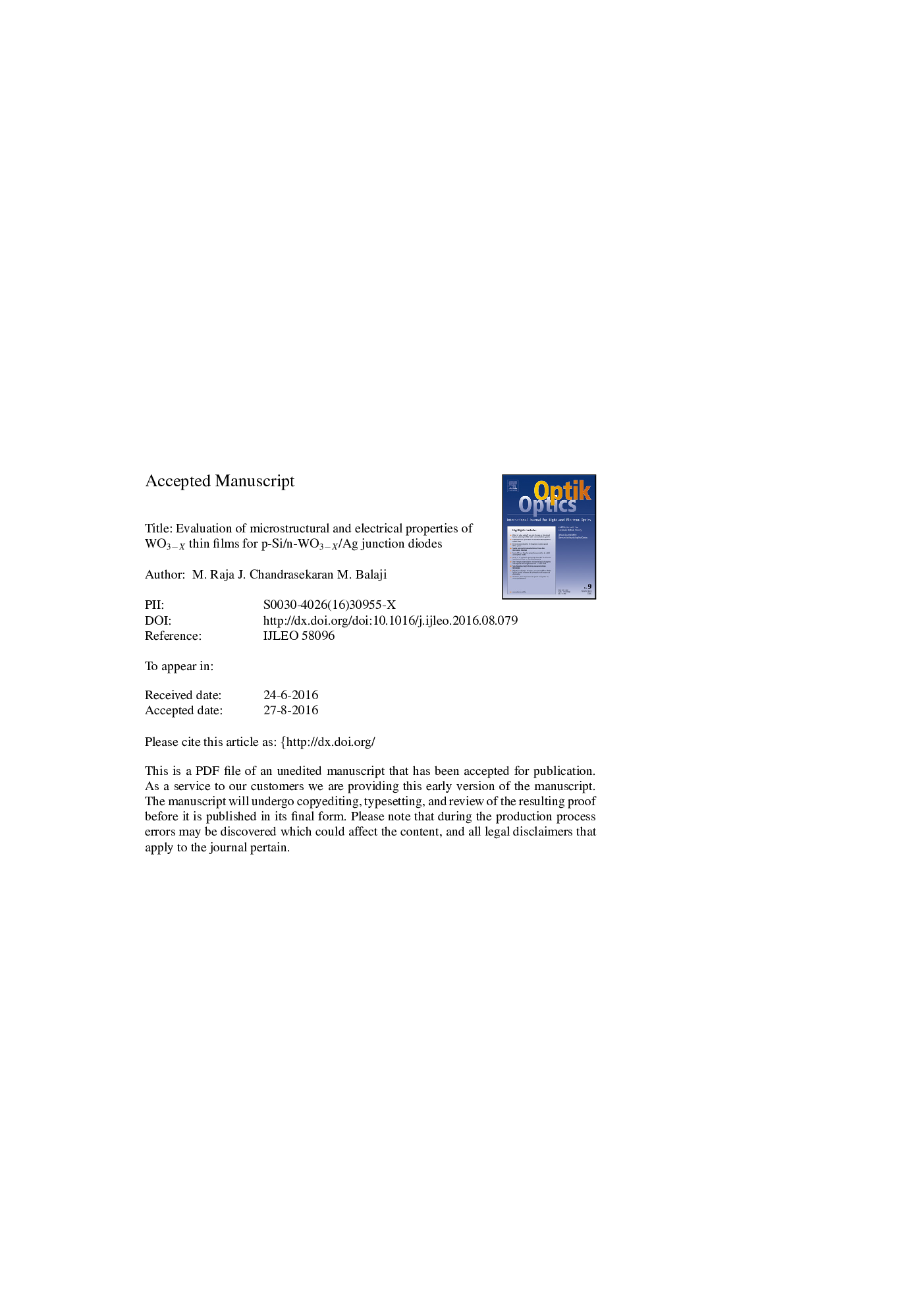| Article ID | Journal | Published Year | Pages | File Type |
|---|---|---|---|---|
| 5026458 | Optik - International Journal for Light and Electron Optics | 2016 | 17 Pages |
Abstract
The ln(J)-V-T characteristics of the p-Si/n-WO3-x/Ag junction diode have been analyzed by thermionic emission (TE) mechanism with Gaussian distribution (GD) of the barrier heights. The ultra-fine homologous phases of tungsten oxide (WO3-x) thin films on the glass substrate can be prepared simply via sol-gel spin coating method. The oxygen reduction of the tungsten trioxide (WO3) thin films was experimentally controlled by various organic acid additives. The organic acid-treated films have hexagonal and monoclinic crystallographic Magneli phases of WnO3n-2 series (WO2.92, WO2.9 and WO2.89). The morphological changes in the plate-like structure under the strong influence of the organic acids were observed from SEM analysis. In the temperature dependent dc electrical conductivity, the charge transport mechanism of the WO3-x thin films was analyzed by Arrhenius, Mott's variable hopping, small polaron mechanisms. From the J-V-T characteristics of the p-Si/n-WO3-x/Ag diode, the increasing of barrier height (ΦB) and decreasing of ideality factor (n) reveal that barrier inhomogeneities at the interface, which is assumed by Gaussian distribution. The mean barrier height (ΦB), the standard deviation (Ï02) and Richardson constant (A*) values were investigated in the temperature range 303â423 K. The better diode performance was acquired to the Si/WO2.89/Ag device with the experimentally intended A* value of 34.81 A/cm2/K2 which is near to the well-known value of 32 A/cm2/K2 for p-type Si.
Related Topics
Physical Sciences and Engineering
Engineering
Engineering (General)
Authors
M. Raja, J. Chandrasekaran, M. Balaji,
